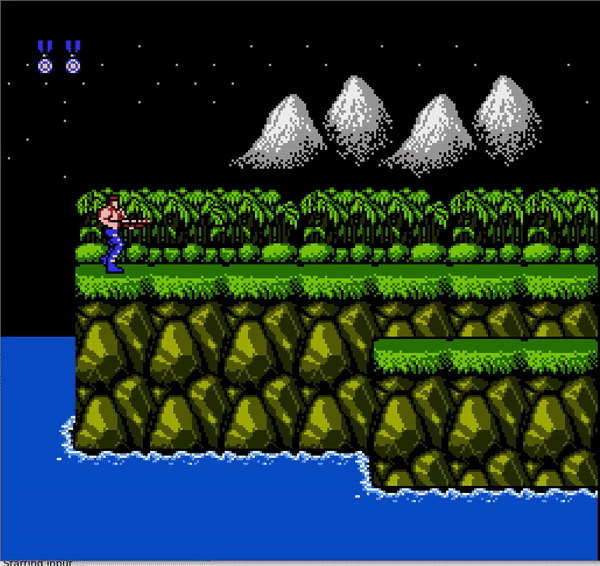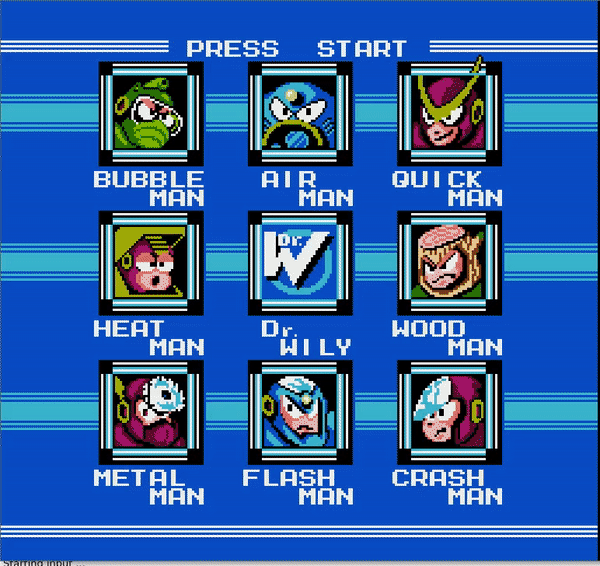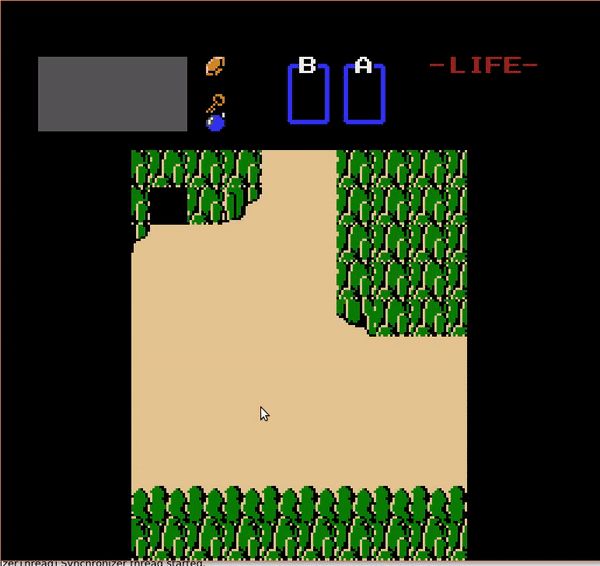NES emulation journal: Implementing mappers
07 Jan 2019The first NES games were pretty simple. Arkanoid, Donkey Kong and Super Mario Bros for example are all running using the first generation of cartridge, which includes 16kb or 32kb of ROM (instructions) and 8kb of sprite/tiles data. The size and scope of a game were effectively limited.
Game developers began using different kind of chips for their game to extend
those original limitations. Instead of having just 32kb of PRG-ROM (program ROM) data, a game
could have much more and the chip would select what instruction area is currently
in use. In NES emulation, the term mapper is used to refer to the different type of
chips.
Mapper 0: NROM
This is the mapper used with the first NES games. It has not bank-switching capabilities so the game using it are pretty simple. It can have either one or two PRG-ROM of 16kb, that are mapped at ranges 0x8000-0xBFFF and 0xC000-0xFFFF of the CPU memory. It also has CHR-ROM which contains the tile and sprite data. This CHR-ROM is mapped to the PPU memory at addresses 0x0-0x2000.
You can still have fun with games using this mapper:
- Donkey Kong
- Mario Bros
- Super Mario Bros
- Arkanoid
The CPU cannot write to the PRG-ROM for this mapper. We’ll see later that other cartridge have registers that can be written to using the PRG-ROM addresses.
Mapper 2: UxRom
The easiest mapper to implement after NROM is Uxrom. It provide bank-switching capabilities. It means that the program can change the data that is mapped to the CPU memory. In the Mapper 2’s case, the CPU memory from 0x8000 to 0xBFFF can be changed by writing to the mapper’s register.
The PPU memory is mapped to the cartridge RAM. There are not ROM for sprites but instead the program will write the tiles to memory before starting the game.
By implementing UxROM, you can unlock a lot of pretty cool games. Notably:
- Contra
- MegaMan
- Castlevania
 Contra: A game using mapper 2
Contra: A game using mapper 2
Mapper 1: MMC1
Once you understand UxROM, a more complicated mapper is MMC1. The principle is similar. CHR and PRG data can be switched to allow a game to have more data. The bank switching mechanism is more complex that UxROM in that it allows to switch banks from multiple memory locations. You’ll need to implement this mapper if you wish to play:
- MegaMan 2
- The Legend of Zelda
- Metroid
 Megaman 2: Glorious death
Megaman 2: Glorious death
I still have a few bugs to fix though :D
 The Buggy Legend Of Zelda
The Buggy Legend Of Zelda
Next steps
MMC3 is also a must to implement as it is required to play Super Mario Bros 3. I still have a lot of graphic glitches in some games so I’ll start with that first…But hopefully I should be ready soon to put the code on a RaspberryPi!
Other recent improvements
- Support 2 players
- Performance improvement: Turned out that reading from input at each cycle slows down the emulator a lot…
References:
http://wiki.nesdev.com/w/index.php/UxROM https://wiki.nesdev.com/w/index.php/MMC1